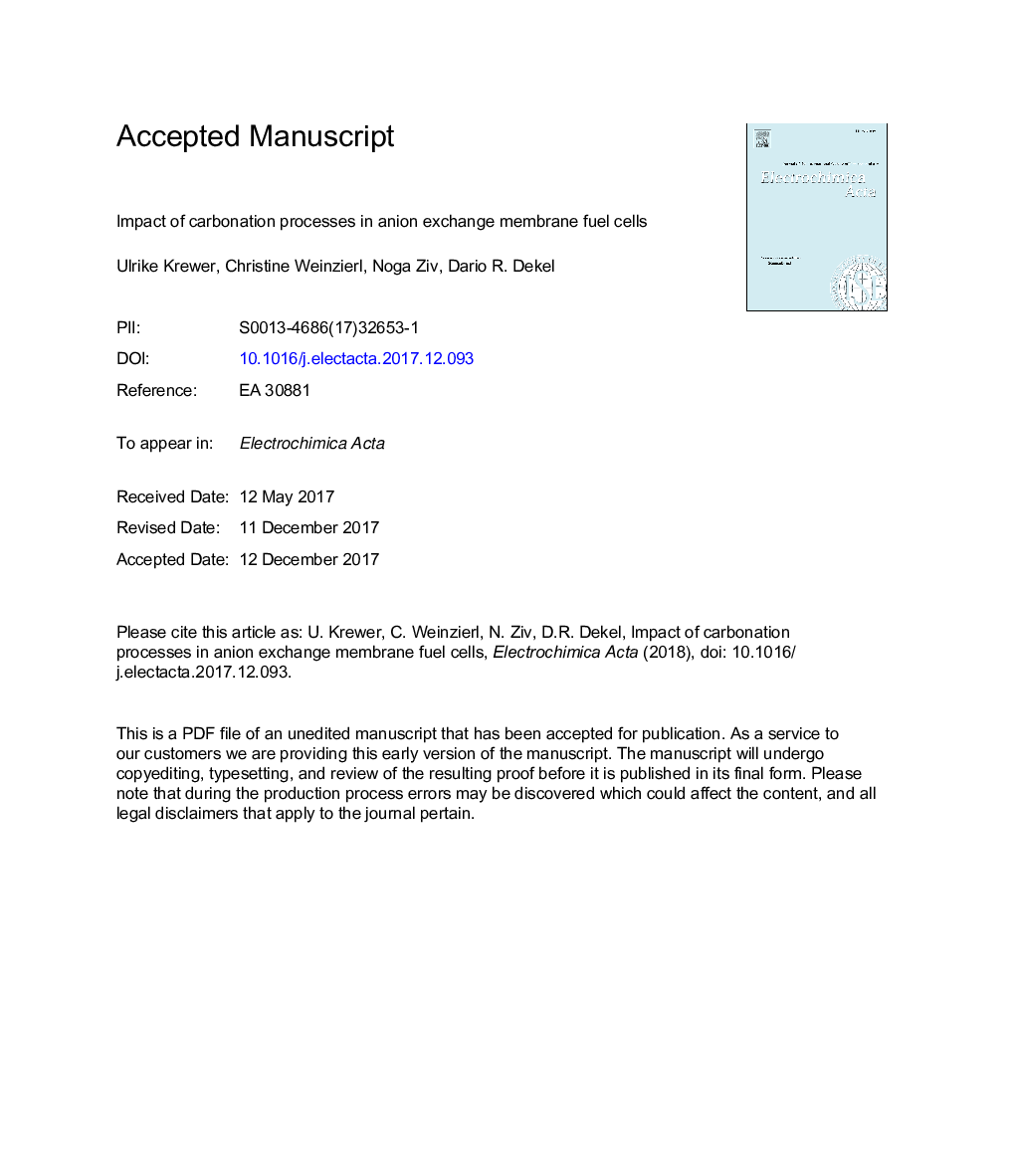| Article ID | Journal | Published Year | Pages | File Type |
|---|---|---|---|---|
| 6604459 | Electrochimica Acta | 2018 | 55 Pages |
Abstract
Alkaline anion exchange membrane fuel cell (AEMFC) is a promising technology to replace precious metals used today as fuel cell catalysts. However, AEMFC does not yet demonstrate high performance when running on ambient air where they are exposed to CO2. The resulting carbonation reaction reduces membrane conductivity. This paper analyses and quantifies the effect of CO2 from ambient air on the concentration profiles in the membrane and the anode and, thus, assesses the CO2 impact on fuel cell performance. The physico-chemical model contains chemical and electrochemical reactions, liquid-gas phase equilibria as well as the transport processes in the cell. Results imply that a significant part of fed CO2 is absorbed in the cathode and is transported as carbonate ions to the anode. Concentration profiles in the membrane reveal an enrichment zone of CO2 in the membrane close to the anode, negligible HCO3â and a wide distribution of CO32â across the membrane. The carbonate distribution affects overall anion exchange membrane conductivity. For practical relevant current densities of i>500mAcmâ2 and typical excess ratios of 1.5 for the hydrogen feed, less than 10% of the anions in the membrane are CO32â. We show that while increasing cell temperature has an ambiguous effect on the carbonation process and on the total effect of CO2 on the cell, current density has a significant effect. The impact of CO2 on AEMFC performance can be significantly decreased when operating the cell at high current densities above 1000mAcmâ2.
Keywords
Related Topics
Physical Sciences and Engineering
Chemical Engineering
Chemical Engineering (General)
Authors
Ulrike Krewer, Christine Weinzierl, Noga Ziv, Dario R. Dekel,
